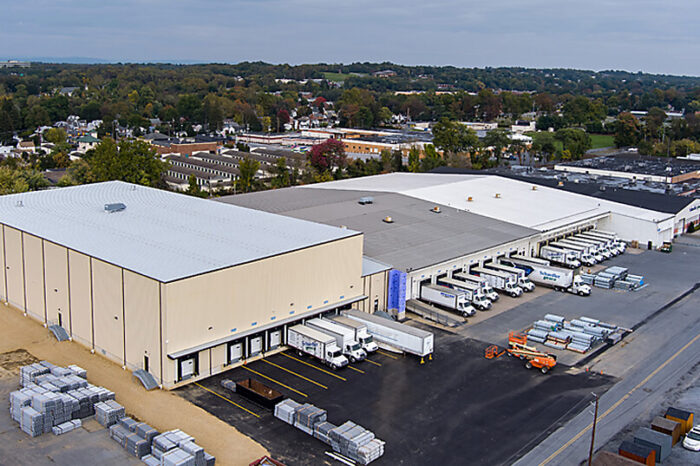6 Steps for Optimizing Warehouse Productivity
 The essence of an electrical distributor is the ability to acquire products and disseminate it locally. In other words, be a warehouse operator. The more efficiently a company can do this, at scale, the more profit it can generate (and that is assuming that management appropriately manages its sales organization and pricing.)
The essence of an electrical distributor is the ability to acquire products and disseminate it locally. In other words, be a warehouse operator. The more efficiently a company can do this, at scale, the more profit it can generate (and that is assuming that management appropriately manages its sales organization and pricing.)
A number of the distributors focused on the long-term have / are investing in central / regional distribution systems and the technology to optimize warehouse productivity. They view that “scale” can be a differentiator. Further, given the competition for labor, and the lack of warehouse labor in many markets, achieving warehouse productivity will require smarter systems … and these smarter systems, inevitably, are technology driven and have measurement tools. Some may be AI-driven, others are comprehensive, integrated, systems.
Norm General, Senior Account Executive at Tecsys, a warehouse management company, shared what he sees some of the top distributors such as Werner Electric, Rexel Canada and Kendall Electric, have done to strengthen their warehouse operations to drive productivity … and presumably profitability:
Wired for Success: What the Best Electrical Distributors Do Differently
Having been involved in the electrical distribution industry for over 35 years, I have observed a common thread among successful electrical distributors. These companies consistently prioritize continuous improvement in their warehouse operations and strive to make it easy for their customers to do business with them. In this article, I will share insights and lessons learned from years of experience, emphasizing the importance of warehouse operations as a differentiating factor in this competitive industry.
1. Embracing Technology and Adaptation
One of the key factors I have noticed among successful electrical distributors is their early adoption of technology. Rather than shying away from it, these distributors have embraced technology and utilized it to their advantage. This forward-thinking approach has allowed them to thrive in the ever-changing market. They understand that providing their sales representatives with the right tools is essential for success. For instance, value-added services (VAS) such as assembly, kitting, and job management have become key differentiators in today’s market. However, it is equally important to track the costs associated with these services, considering the expensive nature of warehouse space.
2. Continuous Improvement and User-Centric Approach
A successful warehouse operation requires a warehouse manager who is always looking for ways to improve. End users play a crucial role in the operations, and their needs should be a priority. Implementing techniques like gamification can help retain and motivate key staff. Additionally, enhancing user experience by adding graphics onto handheld devices, increasing font size, and customizing the language can significantly reduce errors and increase efficiency. It is important to constantly monitor and address the needs of end users to ensure a streamlined and productive warehouse operation. It is well known that errors increase for users on pure character based ‘RF’ devices late in their shift.
3. Optimizing Warehouse Staff and Resources
Efficiently allocating resources is paramount for maximizing productivity. Successful electrical distributors understand the importance of placing their best pickers in high-volume, high-error prone picking zones. This strategic placement is based on accurate statistics on user accuracy and productivity. By utilizing data-driven insights, distributors can minimize errors and increase overall efficiency. Resource optimization also carries sustainability benefits, providing another channel for competitive differentiation.
4. Implementing Warehouse Management Software (WMS)
Implementing a Warehouse Management Software (WMS) can bring significant productivity gains. However, it is  important to ensure that the warehouse is adequately prepared for the integration. This includes ensuring data cleanliness, product slotting analysis and establishing Standard Operating Procedures (SOPs) before implementing the new WMS. Volumetric data plays a crucial role in optimizing the effectiveness of the WMS, allowing for directed putaway, optimized real time slotting, space utilization, and efficient picking into final containers. Real-time reporting and analytics capabilities are also essential for monitoring key performance indicators and making data-driven decisions. Choosing the right WMS package and company involves considering factors such as Gartner recognition, having a solid project team, addressing change management, and evaluating comprehensive supply chain suite offerings.
important to ensure that the warehouse is adequately prepared for the integration. This includes ensuring data cleanliness, product slotting analysis and establishing Standard Operating Procedures (SOPs) before implementing the new WMS. Volumetric data plays a crucial role in optimizing the effectiveness of the WMS, allowing for directed putaway, optimized real time slotting, space utilization, and efficient picking into final containers. Real-time reporting and analytics capabilities are also essential for monitoring key performance indicators and making data-driven decisions. Choosing the right WMS package and company involves considering factors such as Gartner recognition, having a solid project team, addressing change management, and evaluating comprehensive supply chain suite offerings.
5. No Short Cuts for Success
Wire cutting is a critical function that often does not receive enough attention in electrical distribution warehouses. It is essential to recognize its importance as mistakes made during wire cutting can have far-reaching consequences throughout the company. To address this, ensure to implement a wire cutting module that is seamlessly integrated with customer service operations. By providing warehouse operators in charge of wire cutting with all the necessary information, without the constant need to communicate with sales representatives or customer service, efficiency and accuracy can be greatly improved. This includes directing operators to the smartest reel for cutting, ensuring they have knowledge of the starting and ending foot markers, and generating detailed customer labels for precise identification. Prioritizing an integrated wire cutting module within warehouse operations not only saves time and resources but also enhances customer satisfaction by delivering accurately cut wires for seamless installations.
6. Ensuring Data Accuracy, Customizability, and Integration
Integration
As stated, data accuracy is vital for a successful warehouse operation. Clean data, accurate slotting information, and well-defined SOPs are prerequisites for an effective WMS implementation. A good WMS should provide continuous improvement tools and configurations that allow for customization with minimal or no help from your vendor. User-friendly graphical user interfaces (UI) reduce errors and facilitate the onboarding process for new staff. Seamless integration with automation systems, handling volumetric data for multiple units of measure, and real-time reporting and analytics are crucial functionalities to consider.
Software Updates and Hardware Compatibility
Choosing a vendor that provides regular updates, software enhancements, and security patches is essential to keep the WMS up to date with the latest features and bug fixes. Additionally, ensuring compatibility with a range of hardware devices such as barcode scanners, tablets, mobile computers, and printers provides flexibility and allows distributors to choose the hardware that best suits their operational needs.
Amping Up Your Competitive Advantage
At the end of the day, savvy warehouse managers know that they are not running a cost center; they are running their business’ competitive differentiator. Efficient warehouse operations are vital for success in the electrical distribution industry. By embracing technology, focusing on continuous improvement, prioritizing user-centric approaches, implementing a suitable WMS, and ensuring data accuracy and integration, distributors can enhance efficiency, reduce errors, and drive long-term success. Thorough research and assessment of vendors based on specific business requirements are crucial for making informed decisions that benefit the company now and in the future.
Norm is a sales exec for Tecsys, a global supply chain technology provider, that delivers comprehensive solutions for warehouse, distribution and transportation management, point of use supply management and more. Click here to reach him.
Thought
Why is this important? Consider that the recent NAED PAR report highlights that distributor net profit before takes declined 10% from 2022 vs 2021 and it’s expected to decline again as growth probably reverts to the historical norm (over time.) Making money requires managing costs while taking share. Customers want “ease of doing business”.
Distributors need to continuously be looking at their warehouse operations and saying “how can we be more efficient, cost-effectively?”























